Easy Ways To Save Money At Home
33 Brilliant Ways to Save Money at Home
You don't have to cut corners to cut costs. These simple projects and maintenance tasks will help you achieve the thing we love most about DIY: saving money!
1 / 33
 Photo: You Touch Pix of EuToch/Shutterstock
Photo: You Touch Pix of EuToch/Shutterstock
Install a Water Heater Timer
This device allows you to program the times when your water heater activates and deactivates during a 24-hour period. Each household is different and you must determine, based on your hot water use, if a timer is right for you.
ⓘ
2 / 33
 joSon/Getty Images
joSon/Getty Images
Drive 55 To Save Money on Gas
Speed kills your gas mileage and your wallet. Aerodynamic drag is a minor concern in city driving, but it really kills your gas mileage at speeds over 55 mph.
In fact, increasing your speed to 65 increases drag by 36 percent! If you do a lot of highway driving, getting to your destination a few minutes early could cost you an extra $510 a year. Keep it closer to 55 mph and use your cruise control — it will pay off.
3 / 33
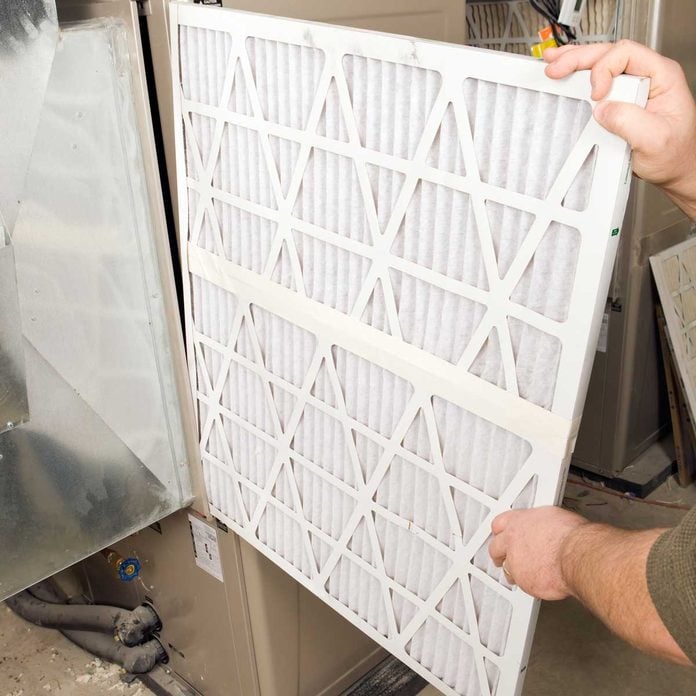 BanksPhotos/Getty Images
BanksPhotos/Getty Images
Change Furnace Filter and Save up to $60 a Year
Keeping your furnace (gas or electric) tuned up has two big benefits: It makes the furnace run efficiently and it prolongs the furnace's life span. And you can perform the annual furnace tune-up yourself in about three hours.
Change the filter every month of the heating season (or year-round if the filter is also used for A/C). Be sure you insert the new one so it faces the right way. The filter protects the blower and its motor; a clogged filter makes the motor work harder and use more power.
4 / 33
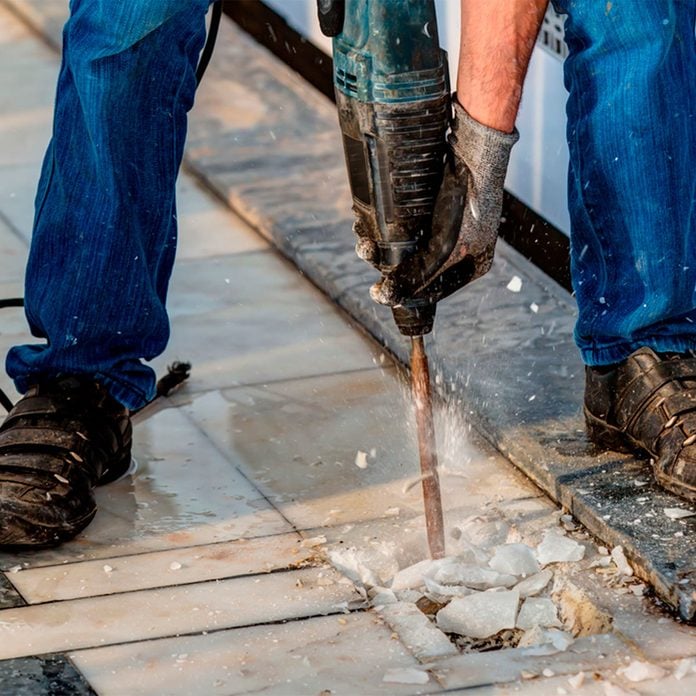 muratart/Shutterstock
muratart/Shutterstock
Rent Tools
Many DIY projects such as tile removal require a special tool — a jackhammer — that can be quite expensive to purchase. You can rent a tool far cheaper than you can purchase it.
Common tools you can rent by the hour or day include pressure washers, jackhammers, hammer drills and carpet cleaners. Chances are good that your local tool rental center will carry the tool you need for your project.
5 / 33
 FAMILY HANDYMAN
FAMILY HANDYMAN
Replace Your Cabin Air Filter
A clogged cabin air filter can damage your car's blower motor and cause your AC to run longer and harder in the summer. Cabin air filters are easy to access and replace and you'll save about $30 by doing it yourself.
Buy a replacement cabin air filter at any auto parts store and ask the clerk to print out the installation instructions. Cabin air filters are usually located in the air ducts behind the glove box in late model vehicles.
However, some car makers locate them in the cowling or console area. Just remove the access covers and slide out the old filter. Note the direction of the airflow arrows so you can install the new filter in the proper orientation. Then reinstall the covers and you're done.
6 / 33
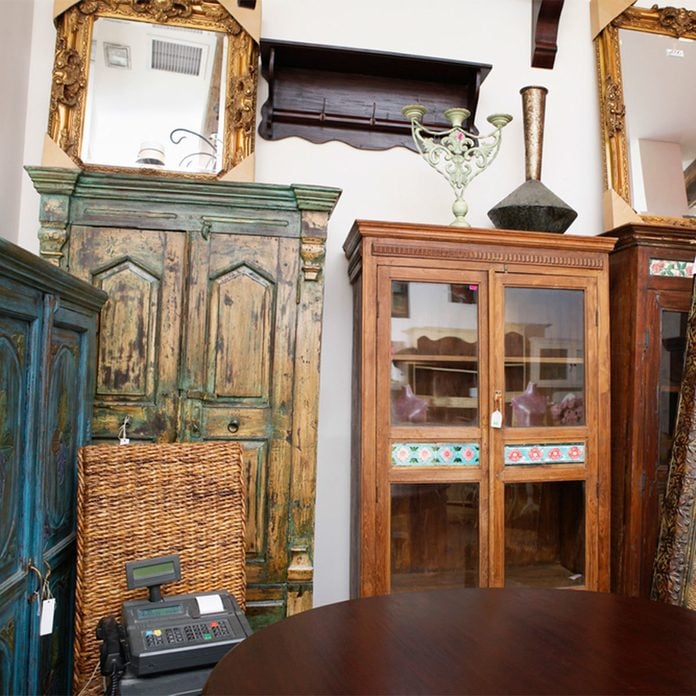 sirtravelalot/Shutterstock
sirtravelalot/Shutterstock
Repurpose Used Furniture
One man's junk is another man's treasure. Many older furniture pieces were manufactured using higher quality materials than today's offerings. Whether you plan to refurbish it or break down the piece for materials, this practice can really provide you with an opportunity to save a few bucks.
The cost of hardwoods and exotics such as cherry, oak, maple and teak has risen steadily over the years. Old furniture can provide you with a free or inexpensive source for these materials. And refinishing furniture makes it look new again.
7 / 33
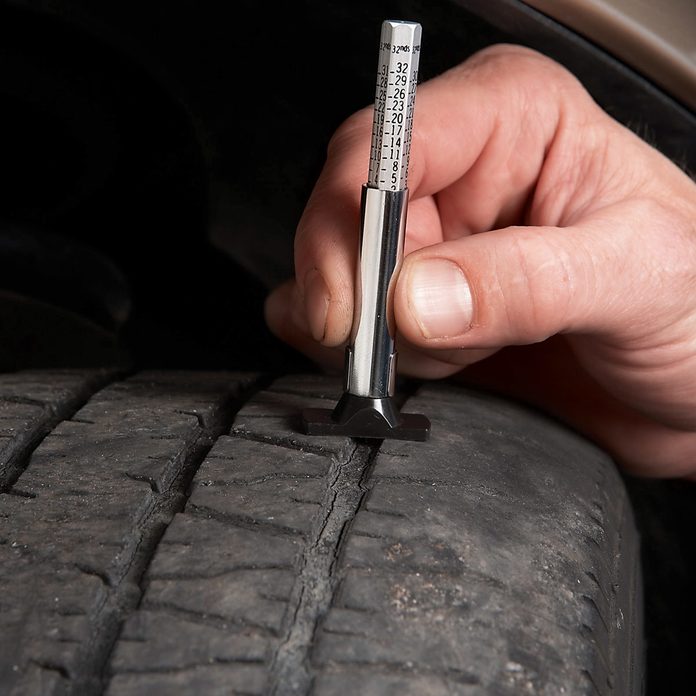 Family Handyman
Family Handyman
Keep Tires in Alignment
Keep your car aligned and save about $140 per year. If your car tires are bowed out of alignment by just .017 in., it's the equivalent of dragging your tire sideways for 102 miles for every 20,000 you drive. That'll cost you $150 a year in wasted gas.
It will also wear your tires faster, costing you $70 more a year. Here's an easy way to check your alignment without taking your car in to the shop. Buy a tread depth gauge ($2) and measure the tread depth on both edges of each tire (rear tires too).
If one side of the tire is worn more than the other, your car needs to be aligned. An alignment costs about $80, so you'll still save $140 the first year alone.
8 / 33
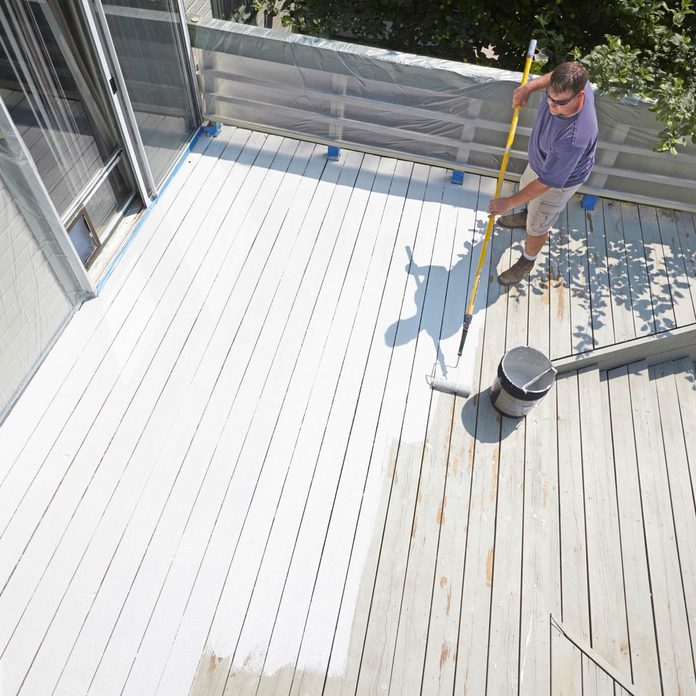 Family Handyman
Family Handyman
How to Restore Your Deck
After a few years, your deck is sure to show some wear and tear and make you feel like you have an ugly deck. Don't rush to replace boards that are otherwise in good condition. With a deck restoration coating and a few days in the sunshine, your deck will look as good as new.
9 / 33
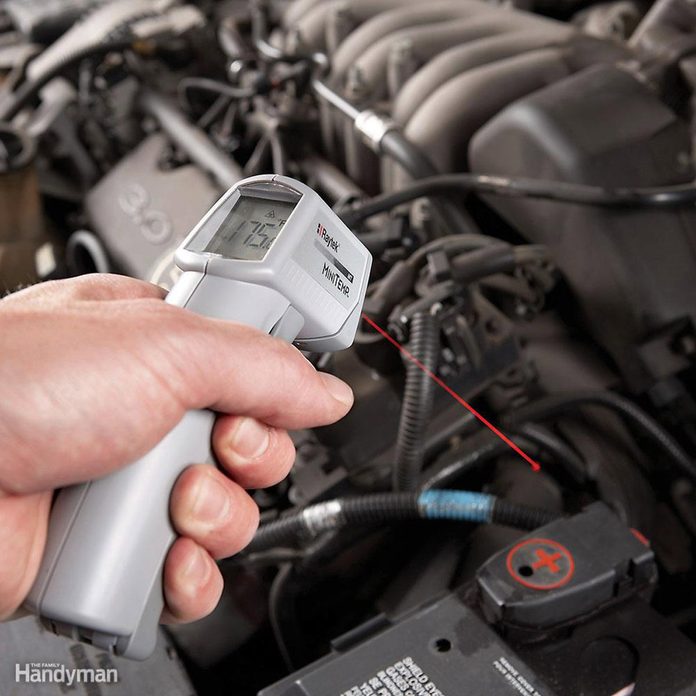
Replace a Failing Thermostat
A thermostat that opens too quickly or stays open can dramatically lower the coolant temperature and put a mega-chill on your gas mileage. All you need to check it is an inexpensive infrared laser thermometer.
Simply aim it at the thermostat housing. If your engine is warmed up and the thermometer reads less than 160 degrees Fahrenheit, you're wasting gas and it's time to replace the thermostat. (To reduce reflection errors, spray the thermostat housing with black paint prior to testing.)
10 / 33
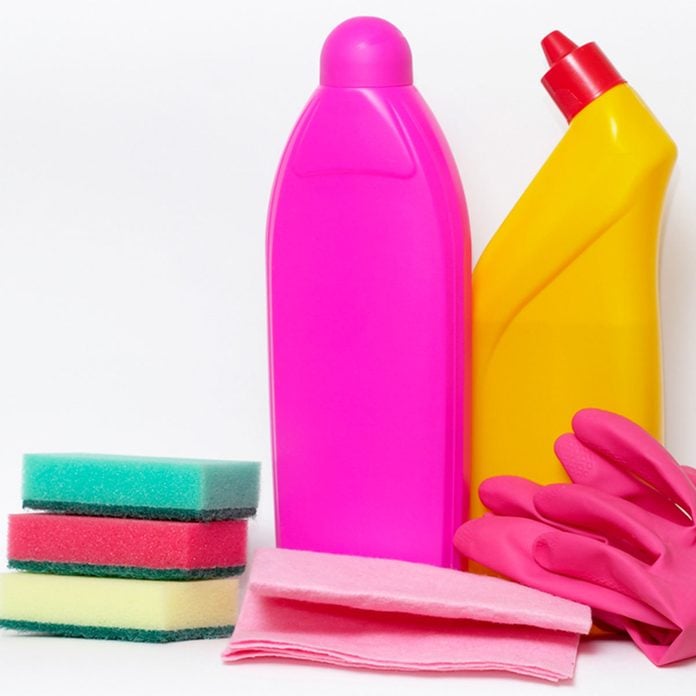 Dejan Dundjerski/Shutterstock
Dejan Dundjerski/Shutterstock
Make Your Own Household Cleaners
You can help the environment and save a few bucks by making your own household cleaners. For instance, instead of using store-bought glass cleaner, mix two cups of water with a 1/2 cup of vinegar to create your own. Another easy formula for all-purpose cleaning is mixing 4 tablespoons of baking soda with one quart of warm water.
11 / 33
 Family Handyman
Family Handyman
Refinish Your Own Hardwood
Intimidated by this seemingly daunting project? Don't be. If you have the will and a whole day (or two) to yourself, you can refinish the hardwood floors in the major areas of your home.
You don't necessarily need to sand, but if the floor is damaged enough to warrant buffing, check out your local hardware store and rent the equipment for anywhere from 4-48 hours.
12 / 33
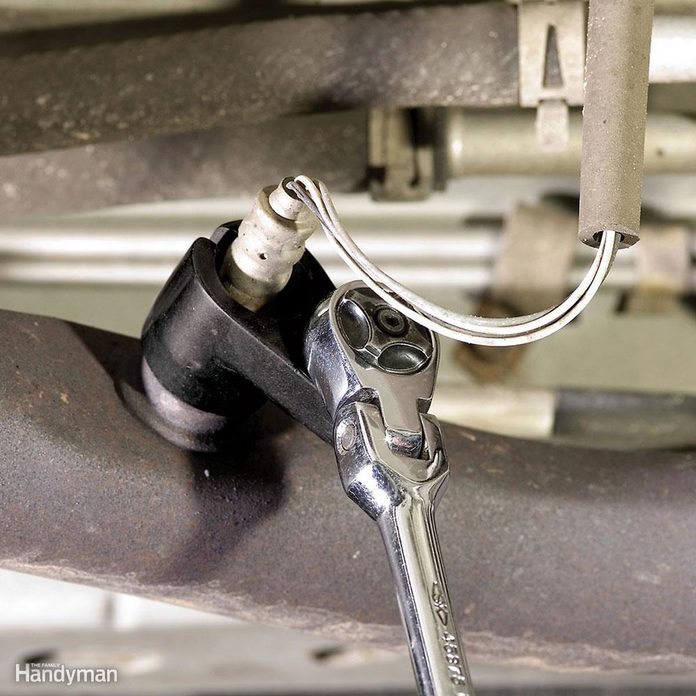
Keep an Eye on Warning Lights
Pay attention to your warning lights. Car owners think a glowing check engine light isn't important because it just means you've got an "emissions problem." Guess what? Emissions problems are almost always caused by an incomplete burn and that means you're not getting the most bang for your buck.
In other words, a check light means you're wasting gas. Worse yet, all that extra gas goes right into your expensive catalytic converter, causing it to fail early. A new catalytic converter can run upwards of $1,000 to replace and then you STILL have to fix the underlying problem that turned on the check engine light in the first place.
Many times the check engine light comes on due to a bum sensor or vacuum leak. Replacing a sensor or fixing a vacuum leak can save far more than what you'll waste in reduced MPG. Stop thinking those warning lights are hieroglyphs and learn how to decipher them.
13 / 33
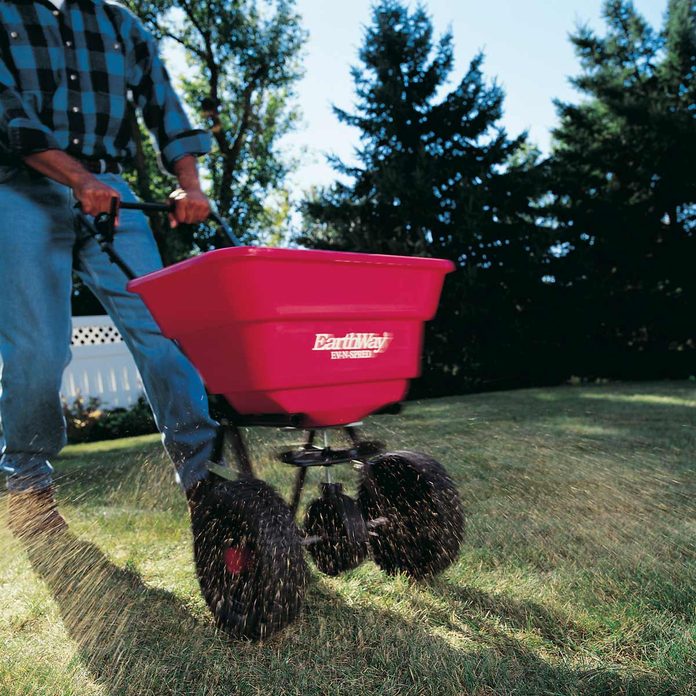 Family Handyman
Family Handyman
Feed the Lawn
If your yard is mostly grass with just a few weeds, forgo the expensive landscaper. With one trip to your local hardware store or plant nursery, you can purchase $25-$50 worth of supplies, spend just a few hours on your lawn, and simply wait for the grass to grow.
14 / 33
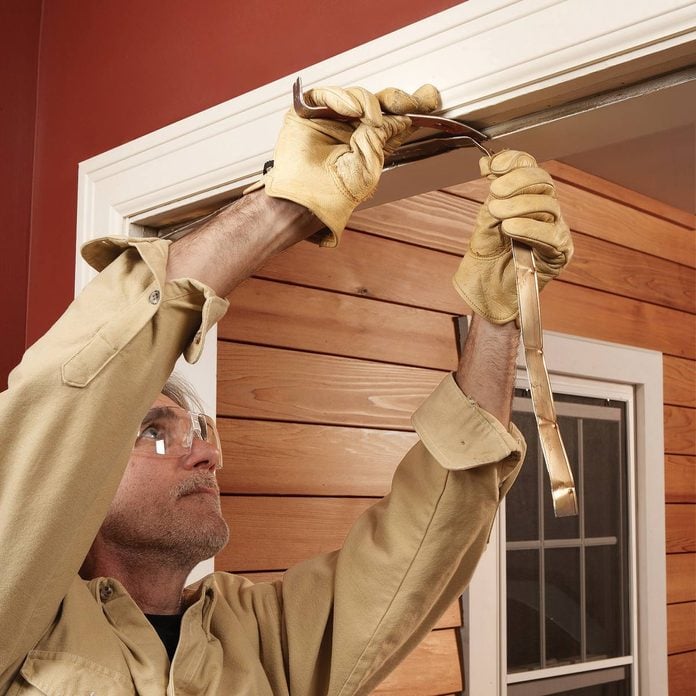 Family Handyman
Family Handyman
Weatherstripping To Lower Utility Bills
If you can see light creeping beneath exterior doors, air is also escaping. Grab a few packages of self-adhesive rubber foam weatherstripping and go to town, sealing any and all doors that lead outside.
Weatherstripping already installed but you're still suffering from a high gas bill? It might be time to replace the strips installed by the previous owners.
15 / 33
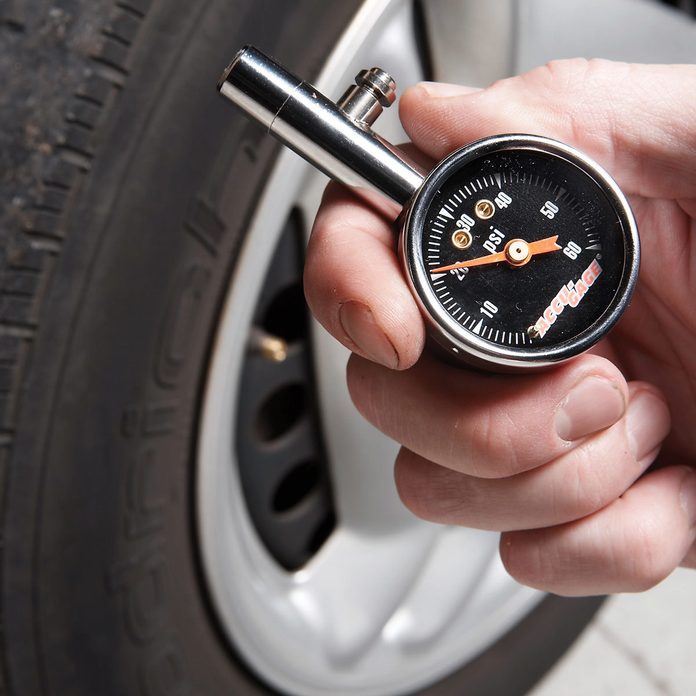 Family Handyman
Family Handyman
Check Tire Pressure Regularly
Keep your tires inflated to the recommended pressure. Surveys show that 50 percent of all drivers' tires are underinflated. You can't "eyeball" tire pressure and you shouldn't rely on the low tire pressure warning light — it only lights up when your tires are at least 25 percent underinflated. At that point you've already started wasting gas.
Instead, check them monthly with a tire pressure gauge. Underinflated tires have higher rolling resistance, causing your engine to work harder and waste almost $600 a year in gas. Low air pressure also wears out your tires twice as fast, costing you an additional $150 a year.
The recommended air pressure for your vehicle's tires is on the decal pasted to the driver's door or pillar.
16 / 33

Change Your Spark Plugs Early
Change your spark plugs BEFORE they're due. Most drivers think their spark plugs last well over 100K miles. That's true for some engines, but not all. In fact, if you own a car with a turbocharger, chances are you should be replacing your spark plugs every 30,000 miles. Refer to your car's maintenance guide for the recommended interval for your particular engine.
Even then, it's never a good idea to squeeze the last drop of life out of your spark plugs. Here's why: If your 100,000-mile spark plugs have 80,000 miles on them, they're 80 percent worn. Misfires and incomplete combustion occur more frequently during that last 20,000 miles, costing you almost $450 in wasted fuel.
You have to replace your spark plugs anyway, so do it early and pocket the savings. Even if you have to replace the plugs one extra time over the life of your car, you'll still come out way ahead.
17 / 33

Check for Brake Drag
Brake drag can really sink your mileage. Brake calipers have a nasty habit of rusting, binding and dragging down your gas mileage. How can you tell if your brakes are dragging without having them checked at a shop? Easy!
Buy an inexpensive non contact infrared laser thermometer, remove the wheel cover (if equipped), and aim the laser at the wheel hub after a drive. Compare the readings from the right and left sides. If they vary by more than 20 percent, you've probably got a dragging brake or a wheel bearing problem, so take it in for repairs.
18 / 33
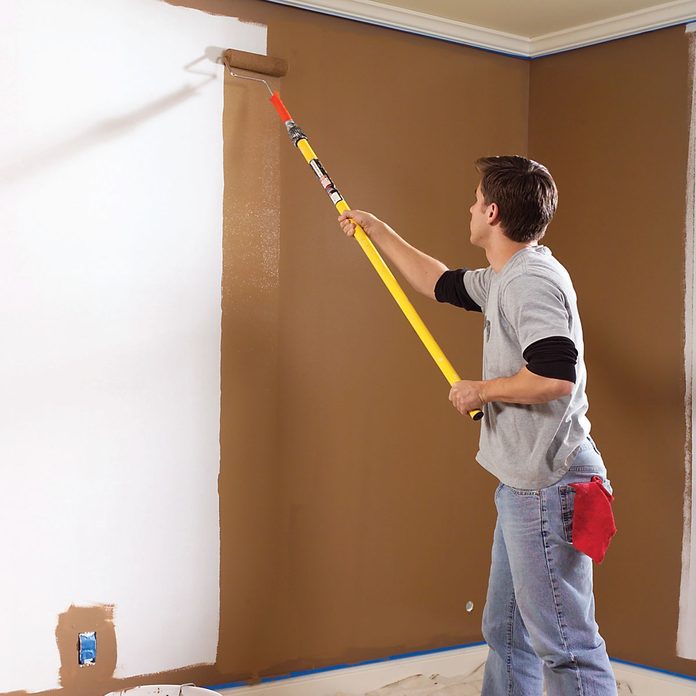 Family Handyman
Family Handyman
Add a Quick Coat of Paint
Few things are quicker, easier or refreshes a room more than a new coat of paint. Even switching up a bright white for a trendy, bright grey can change your whole perspective and give you a starting point for new colors and decoration.
Gallons of paint range from $30-$50, and with primer/paint combinations, you will likely only need a gallon or less to finish an average sized room. Add another $10, and you'll be set with rollers, paint brushes, and painter's tape. This DIY repair could potentially save you thousands over the cost of a professional painter.
19 / 33
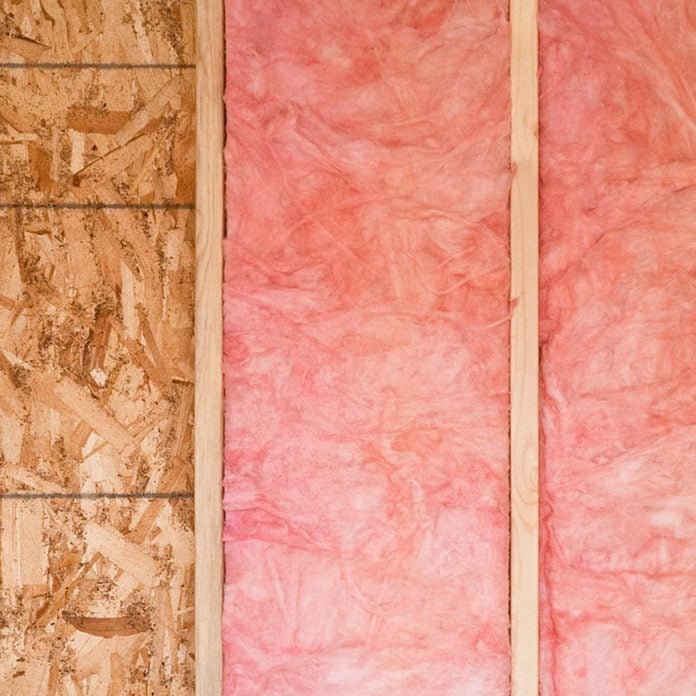 David Papazian/Shutterstock
David Papazian/Shutterstock
Insulation To Save Money
Though it can seem intimidating, installing your own batting installation can be easy, and take just a few hours if you isolate the need to a few key spaces. Have a drafty attic? Start there. Concerned about a freezing crawl space? Throw on your work jeans and get to work.
These insulating spaces will instantly feel warmer and you'll notice the savings on your next heating bill.
20 / 33
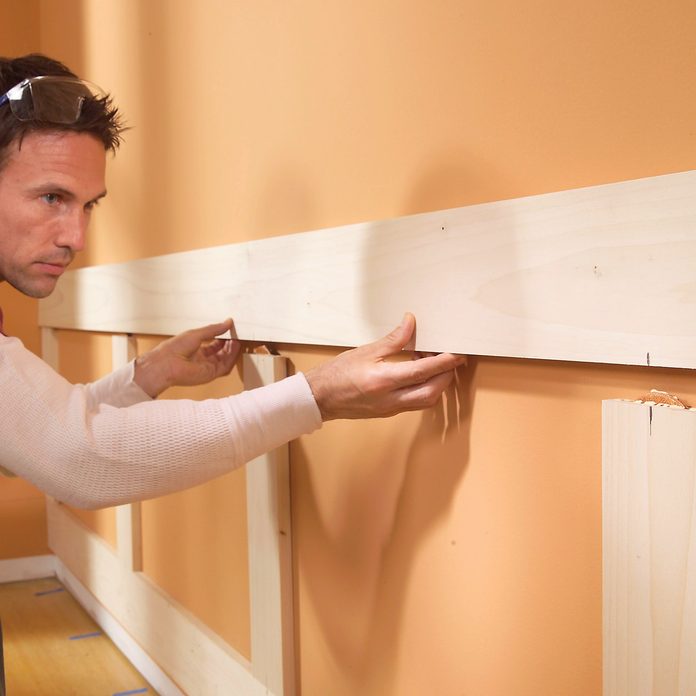 Family Handyman
Family Handyman
Ditch the Wood Paneling
This is a fun one. Composite wood paneling may have been all the rage in the 60s and 70s, but unless it's still in perfect condition and painted white, it's probably an eyesore. Popping off this decorative paneling can take minutes, and is seriously satisfying.
Just be ready since you never know what condition the wall is in underneath. Be prepared to do a little plaster repair and, of course, repaint.
21 / 33
 Africa Studio/Shutterstock
Africa Studio/Shutterstock
Install a Clothes Line
A simple clothesline allows you to dry your clothes for free using the power of the sun instead of expensive electricity. Electric clothes dryers can really put a dent in your pocketbook, especially if you have a large household.
While a clothesline does require a bit of manual labor to hang the clothes, you will enjoy a fresh, natural smell in your laundry as well as a reduced utility bill.
22 / 33
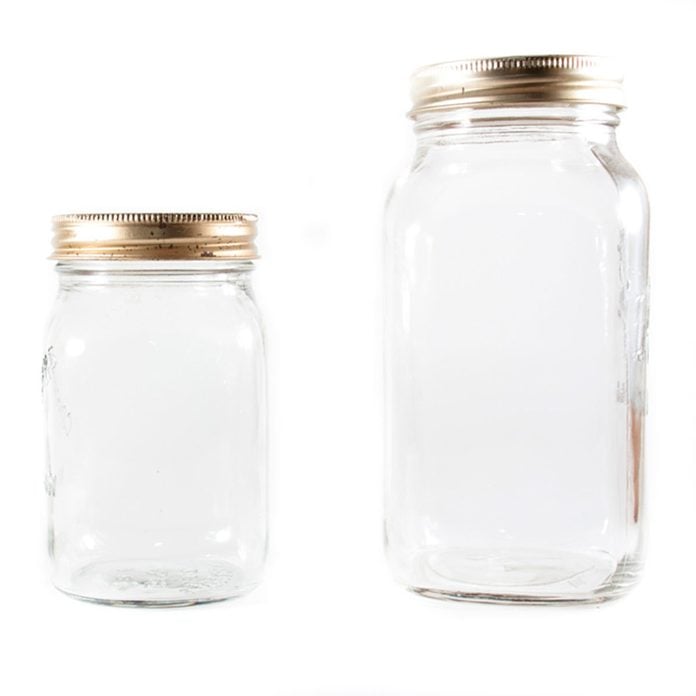 Graham Taylor Photography/Shutterstock
Graham Taylor Photography/Shutterstock
Repurpose Old Jars and Containers for Free Storage
Back in the day, it was common for grandfathers to organize their hardware in mason jars. The simple practice entailed fastening the lid to a shelf bottom and simply screwing on the jar. Other useful containers for free storage include laundry soap bottles, shoeboxes and many more.
23 / 33
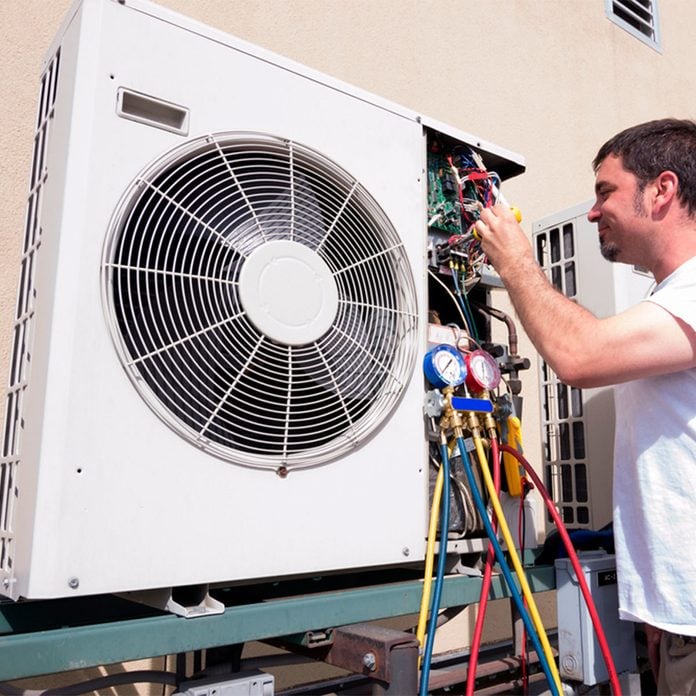 David Spates/Shutterstock
David Spates/Shutterstock
Install a Ductless Mini Split HVAC System
When it is time to replace your HVAC system, consider switching to a ductless mini split. The super-efficient systems require less labor during installation, do not require air ducts and allow you to cool/heat your home in zones instead of the entire house. This can have a profound effect on your energy costs in a good way.
24 / 33
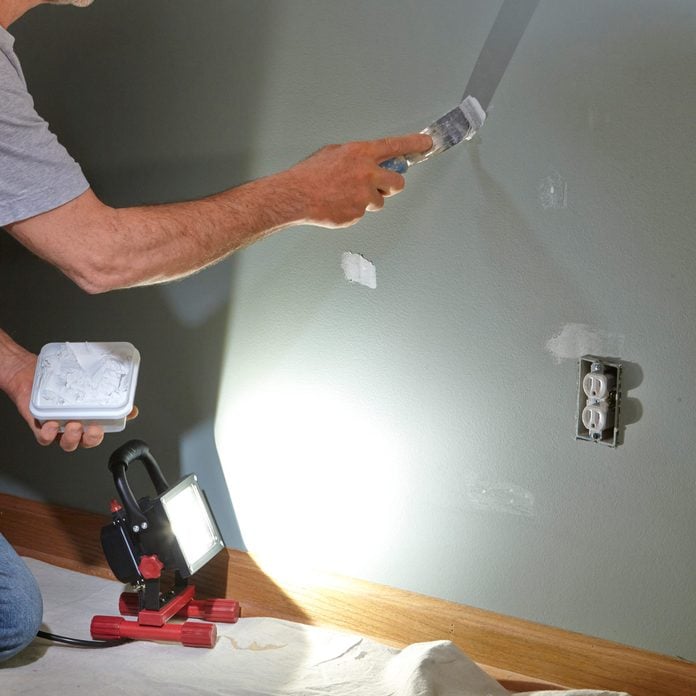 Family Handyman
Family Handyman
Repair Any Holes
So a door knob slammed through the wall after one too many times slamming the door. No need to call your handy contractor. You can easily fix a few holes in your drywall by injecting a setting compound (for smaller holes) or by cutting out the damaged sections and replacing them with new drywall (for larger ones).
25 / 33
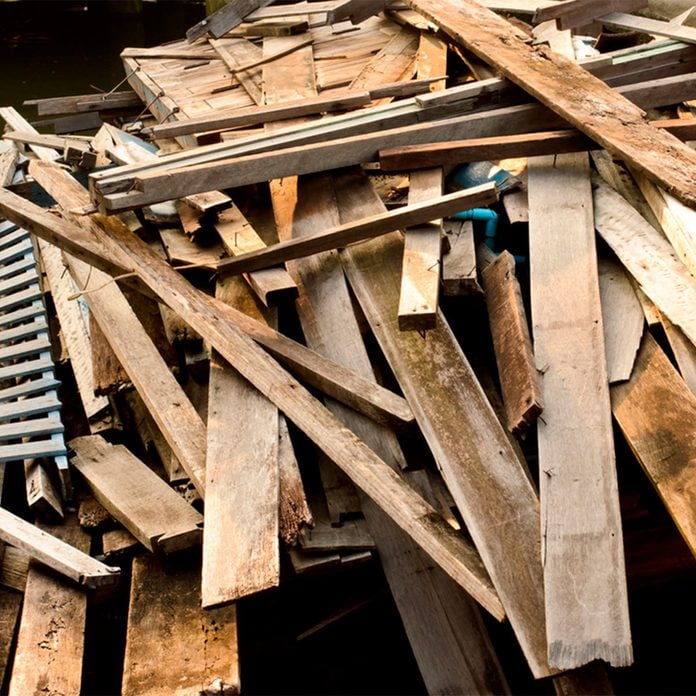 Photo: DT10/Shutterstock
Photo: DT10/Shutterstock
Repurpose Used or Leftover Building Materials
Salvaging used or leftover building materials is a great way to save a few dollars. Visit a nearby construction site and speak to the project supervisor. Often, they will allow you to dumpster dive for discarded materials.
Not only is this good for your wallet, but also the environment by keeping it out of the landfill. In addition, used materials often have a unique patina, which could add extra appeal to your project.
26 / 33
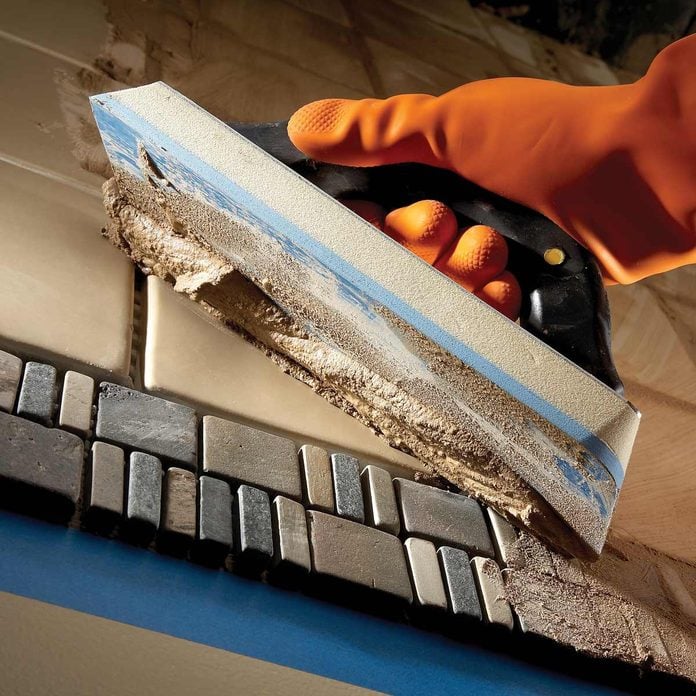 Family Handyman
Family Handyman
Get Rid of Your Laminate Floor
Sick of staring at old, curling and peeling laminate flooring? If you're working with a small space, you can remove the existing flooring and replace it with tile in just one day. Intimidated by the thought of laying your own tile? Choose larger tiles, and you'll only have to lay a few. After the first is in place, the rest are a snap.
27 / 33
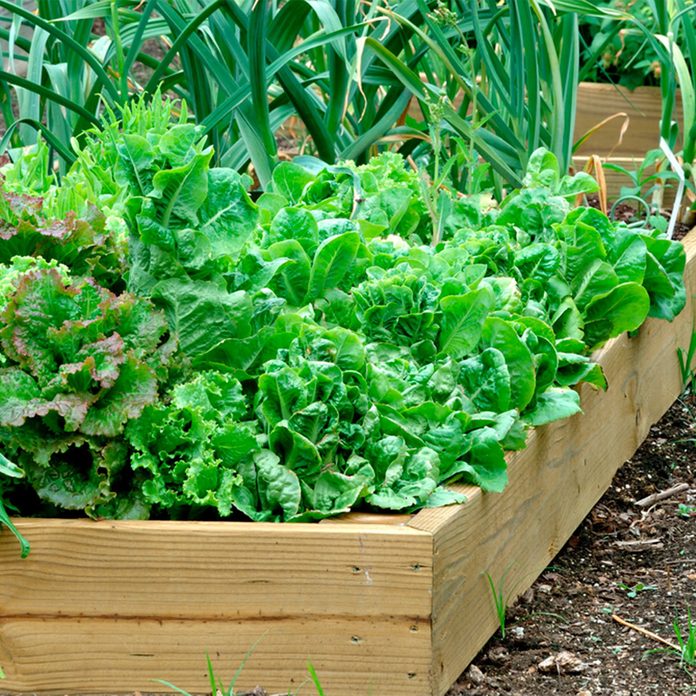 Anne Kitzman/Shutterstock
Anne Kitzman/Shutterstock
Grow Your Own Vegetables
Growing vegetables at home can be a great activity that is fun for the entire family. You don't have to rent a plow and tractor to grow a few tomatoes in your backyard. Many vegetables — tomatoes, squash, radishes, etc. — are easy to grow in containers.
This garden practice utilizes containers such as a simple wooden box or even five-gallon buckets for planting vessels. Aside from the fun you will have growing your own vegetables, the next time you need a tomato, you will save time, money and gas when you can just pick it from your own garden.
28 / 33
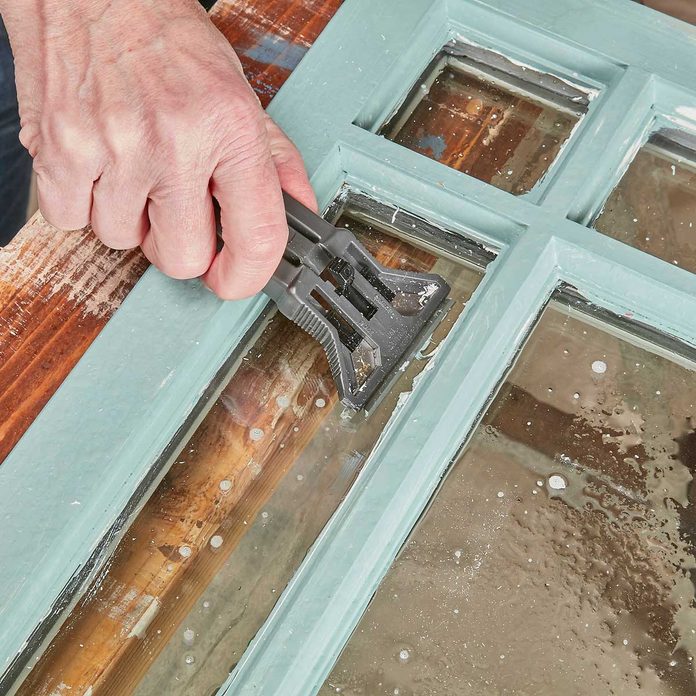 Family Handyman
Family Handyman
Repair and Reglaze Windows
Instead of forking over $5,000-10,000 to replace all of your old windows with brand new ones, consider repairing old windows yourself. With a few hundred dollars in supplies (sand paper, paint, window glaze, etc.), you'll be prepared to reglaze every window in your house.
Though it can be a tad time consuming, you can prioritize the project by room, removing windows one by one to paint, reglaze, and, if necessary, replace any cracked glass.
29 / 33
 Stokkete/Shutterstock
Stokkete/Shutterstock
Repurpose Old Clothing
Purchasing cotton rags for painting, cleaning or dusting projects can get expensive. Make your own rags for free using old T-shirts and other unused garments.
A few minutes with a pair of scissors or utility knife is all it takes to convert unwanted clothing into useful rags.
30 / 33
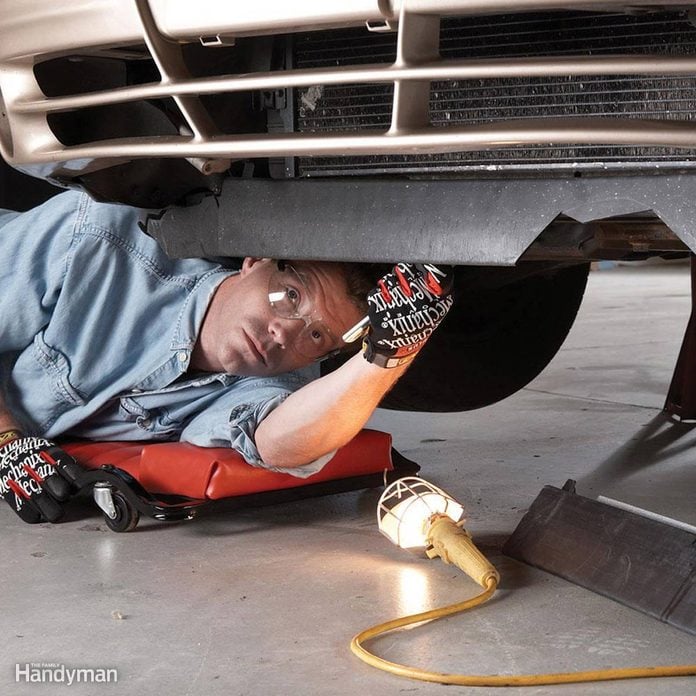 Family Handyman
Family Handyman
Fix Broken Air Dams and Splash Guards
Replace a broken or missing spoiler and under-engine splash guards. The plastic air dam (aka "spoiler") that's broken or missing wasn't just for looks. It actually served a purpose; it forces air up and over the hood to help your car cut through the air with less drag.
The under-engine splash guards help reduce aerodynamic drag too by keeping the air flowing smoothly under your car instead of producing turbulence that causes drag. Contact a junkyard to find a replacement air dam and engine splash guards.
31 / 33
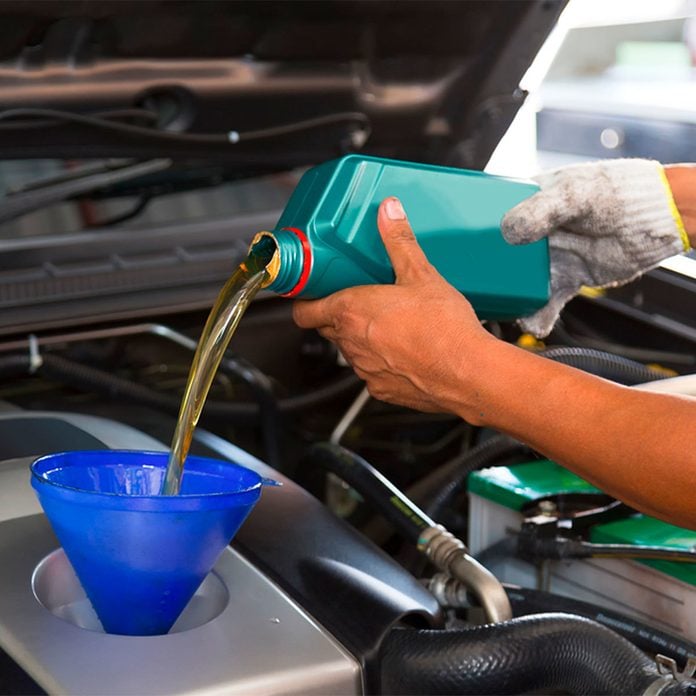 FUN FUN PHOTO/Shutterstock
FUN FUN PHOTO/Shutterstock
Basic Car Maintenance
You can perform routine maintenance on your automobile to cut the costs of repair and upkeep. All that is required is some basic knowledge, some common hand tools and a little elbow grease. It is not that difficult to change your oil, change an air filter, replace wiper blades or swap out a burnt turning-signal bulb.
Folks who are just not mechanically inclined can take advantage of free services offered by many auto parts dealers. Many retailers will install wiper blades, batteries and even air filters for free if you purchase the items directly from their store.
32 / 33
 Family Handyman
Family Handyman
Repair and Replace Caulk
It's fun, it's easy, it's caulking. Dirt or mold creeping underneath the clear caulk in your tub? Cut it out and re-caulk. Gaps in old moulding got you down? Add white caulk for a smooth finish. Cheap and easy, there's no reason you shouldn't be doing this yourself.
33 / 33
 fixer00/Shutterstock
fixer00/Shutterstock
Switch to Energy Star Products
According to energystar.gov, folks saved upwards of $30 million on their utility bills and helped to reduce greenhouse gases by using Energy Star-rated products. These super-efficient products include CFL and LED light bulbs, household appliances, building materials such as windows and doors and HVAC equipment among many others.
Not only is switching to Energy Star products one of the best frugal living tips, but it also allows you take advantage of their energy savings and may qualify you for the Residential Renewable Energy Tax Credit.
Originally Published: July 18, 2021
Sign up for DIY projects sent right to your inbox
Complete DIY projects like a pro! Sign up for our newsletter!

Subscribe & SAVE 1 Year Subscription
for only $10!
Easy Ways To Save Money At Home
Source: https://www.familyhandyman.com/list/ideas-for-saving-money-around-your-home/
Posted by: wongspermild.blogspot.com

0 Response to "Easy Ways To Save Money At Home"
Post a Comment